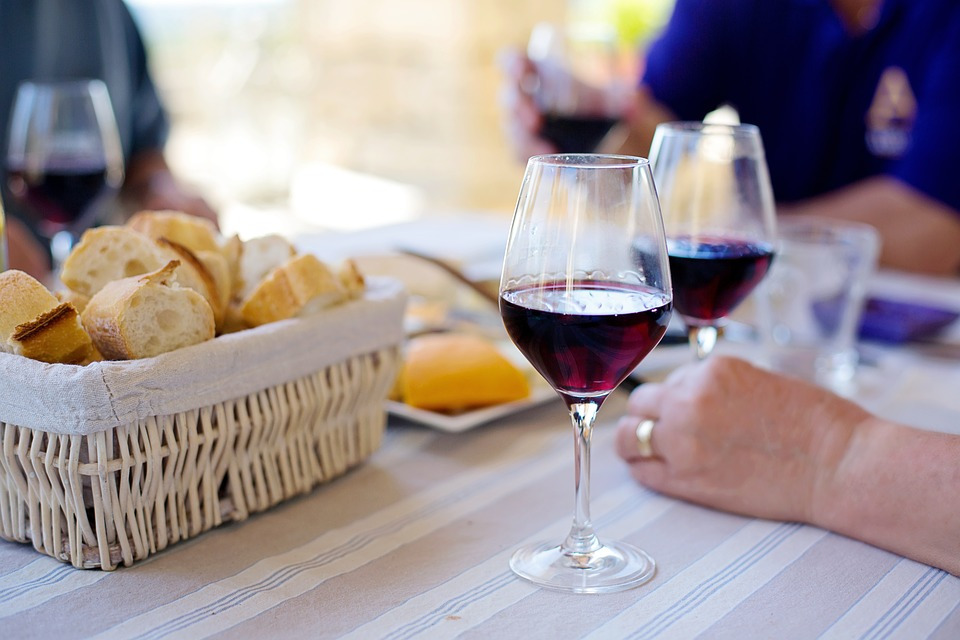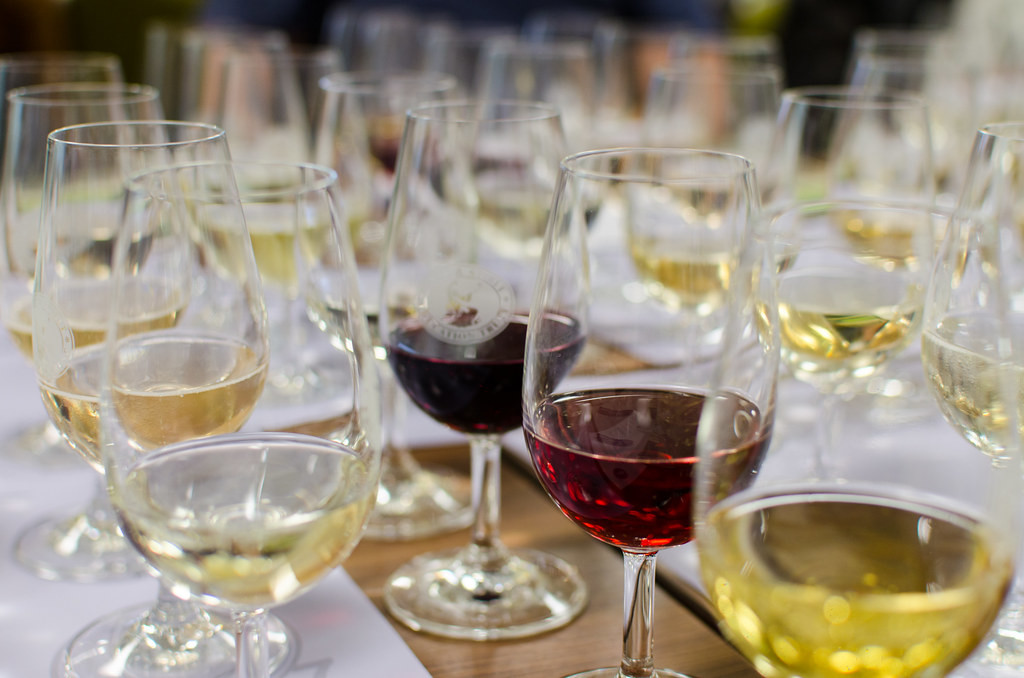It is indeed one of the pleasures of life to enjoy a fine dinner, with the right people and with a good wine pairing. However, at times, matching wine and food can be a difficult undertaking: it is not always easy to find your way around the hundreds of thousands of labels on the market. In Italy, even considering only the certified labels, one faces 526 different types, a number that will certainly grow in the near future, of which
74 are DOCG, 334 are DOC and 118 are IGT, each made by hundreds of producers… There are moreover many Italian wines without certification that are excellent nevertheless, and plenty of exceptional wines beyond the borders of Italy. What will be the right choice for our dinner then? Better
white or red? Or maybe a sparkling one? Or how about a nice rosé? These are just some of the questions that could make us feel like we’re in a huge labyrinth. Yet, keeping in mind some
simple rules, picking the wine for our meal can become a
great pleasure and an exciting challenge!
Obviously, the ultimate goal of a good combination of food and wine is to create teamwork between the two, enhancing the qualities of both through their meeting. The first rule, in fact, is that one should not overshadow the other or, worse, annihilate it. The combination is exact when both are heightened, when harmony is created, and – obviously – when the palate is satisfied. One should always have in mind the taste, the type, and the order of the courses that will be presented at the table so that nothing is left to chance. Pairing is not a skill that is acquired overnight, and time is needed to try and to discover new and interesting wines, as well as to experiment with different matchings, creating knowledge and preferences of what goes well with what. Furthermore, let's never forget that taste is a subjective parameter, therefore the rules commonly followed in terms of combinations are not rigid nor mandatory, but should be adapted to the tastes, the needs (and sometimes to the courage) of the diners.
 One or more types of wine?
One or more types of wine?Some prefer a single bottle of wine that accompanies the whole meal and others opt for a different kind for each course. The choice is personal, but it is also in relation to what will be served! The most important thing to keep in mind is: maximum one wine per dish, so as not to overdo it! Furthermore, it is always advisable to
start with lighter, fresher and younger wines, and then move on to more full-bodied and structured ones. For instance, a red wine, rich in tannins and very acid is usually not suitable for a simple appetizer! It is necessary to proceed in a
crescendo order: never a very alcoholic wine followed by a less alcoholic one, and absolutely avoid starting the meal with an important red wine followed by a young white. In other words: slow and steady wins the race. Or, if you prefer a more technical terminology: it is necessary to verticalize.
But, as with many things, there are exceptions. In fact, the choice greatly depends on the type of dish we have in front of us. Usually, the appetizers include lighter, undemanding foods, and for this reason younger and fresher wines are paired. Now imagine, for example, that you are facing a very fat
foie gras that opens the dinner: of course, you cannot sip it together with a light and sweet white. Much better a strong red, as for instance a
Recioto di Soave DOCG that, even with its high alcoholic content and very structured palate, will turn out to be the right choice.
 Photo of @Torsten ReimerChoosing the right criteria
Photo of @Torsten ReimerChoosing the right criteriaThere is more than one method to choose how to combine a good wine with its dish. The most classic and straightforward is called
combination by composition. According to it, the wine should have the same structure of the food: heavy with heavy, light with light, sweet with sweet, acid with acid, and so on. In practice, this means for example that a plate of
pork with lentils is better accompanied with a bold red, while a prawn tartare certainly prefers a fresh and fruity white. Complex structure with complex structure, freshness with freshness, and so on. On the contrary, a
combination by contrast is also possible. This is more difficult to achieve and requires experience, as well as knowledge of the ingredients and of the “raw materials”. The ultimate goal is to accompany a dish with a wine that has different and sometimes opposite organoleptic properties, but that helps to enhance the dish while making clearly perceptible every single characteristic of both the wine and the recipe. Succeeding in this feat will not only amaze guests but will also give you great satisfaction. Do you want an example? A medium-aged Sardinian
pecorino cheese, a strong, complex and fat cheese, goes very well with Vermentino DOC, a Sardinian white wine with a fresh, sour taste and a bitter aftertaste.
Those who love to travel, on the other hand, can opt for
regional combinations, where wines and dishes are paired according to the local tradition. This criterion allows you to discover new flavours and immerse yourself in new cultures through the cuisine, which, in our country, has many dimensions. In short, there is no need to go in search of who knows whatever sophisticated wine: the right choice is precisely the one that our land and our elders offer us. Let's see two examples in this sense: a thick Florentine-style t-bone steak accompanied by a Chianti Classico, or a plate of
tortellini in broth with a glass of Trebbiano Emiliano... aren’t these two fantastic combinations that make us praise what our beautiful country can offer us on the table?
Finally, another type of matching that we find amazing is the
seasonal pairing. In fact, for the cold and dark winter evenings, structured and full-bodied wines are usually preferred, often reds such as Amarone, Brunello di Montalcino or Tintilia. They moreover go well with the richer and fatter dishes that we usually eat during the winter months. In summer, on the other hand, we prefer to sip young, light, and thirst-quenching wines, often whites or rosé, such as Passerina from Abruzzo or Franciacorta. They go perfectly with fresh summer dishes like spaghetti with clams, veal with tuna sauce, or a summer salad!
What can I say ... I got a little peckish, I think I’ll go prepare myself a platter of aged cheeses from Abruzzo, accompanied by a Montepulciano d'Abruzzo. And for you, what will your next match be?

